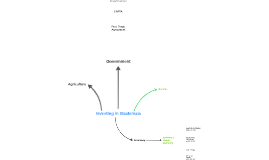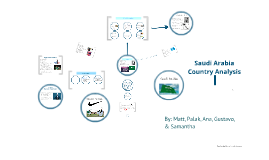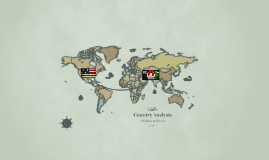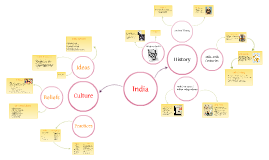Country Analysis
Transcript: Education & Health Care Population Pyramid No contraceptives from government, and people can have as many children as they wish. The population pyramid strongly support this statement, the wide base and narrow top means each family have lots of children. Average of 5 children per women in Afghanistan. This country is Pro-natalist, and is increasing its population size drastically; 64% of the population is 0-24 years old and 42% is 0-14 years old. Walton & Kurtis Country Analysis Population: 31,822,848 Land Area: 652,230 Arithmetic Density: 49 people per square kilometer Arable Land: 11.95% Physiological Density: 408 people per square kilometer of arable land Agricultural Density: 76 farmers per square kilometer of arable land Total Dependency Ratio: 93.1% Youth Dependency Ratio: 88.4% Elderly Dependency Ratio: 4.6% CBR: 38.84 births per 1,000 people CDR: 14.12 deaths per 1,000 people Population Growth Rate: 2.29% Infant Morality Rate: 117.23 deaths per 1,000 live births Life Expectancy: 50.49 years Total Fertility Rate: 5.43 children born per woman Family Planning/Contraceptives and Population Policies Stage of Demographic Transition Afghanistan is currently in stage 2 of the demographic transition. With a high CBR and rapidly declining CDR cause a very high NIR. Stage of Epidemiologic Transition Afghanistan is currently in stage 2 of the epidemiologic transition: Receding Pandemics. Literacy Definition: age 15 and over can read and write Total Population: 28.1% Male: 43.1% Female: 12.6% Education Expenditures: NA School Life Expectancy Total: 9 years Male: 11 years Female: 7 years Child Labor - Children Ages 5 to 14 Total number: 3,252,243 Percentage: 25% Health Expenditures: 9.6% of GPA Physicians Density: 0.19 physicians per 1,000 population Hospital Bed Density: 0.4 beds per 1,000 population Sanitation Facility Access Improved: Urban: 46.8% of population Rural: 23.4% of population Total: 29% of population Unimproved: Urban: 53.2% of population Rural: 76.6% of population Total: 71% of population Age Structure: 0-14 years: 42% (male 6,793,832/female 6,579,388) 15-24 years: 22.2% (male 3,600,264/female 3,464,781) 25-54 years: 29.4% (male 4,771,323/female 4,586,963) 55-64 years: 3.9% (male 603,197/female 622,539) 65 years and over: 2.5% (male 371,753/female 428,808) (2014 est.)

















